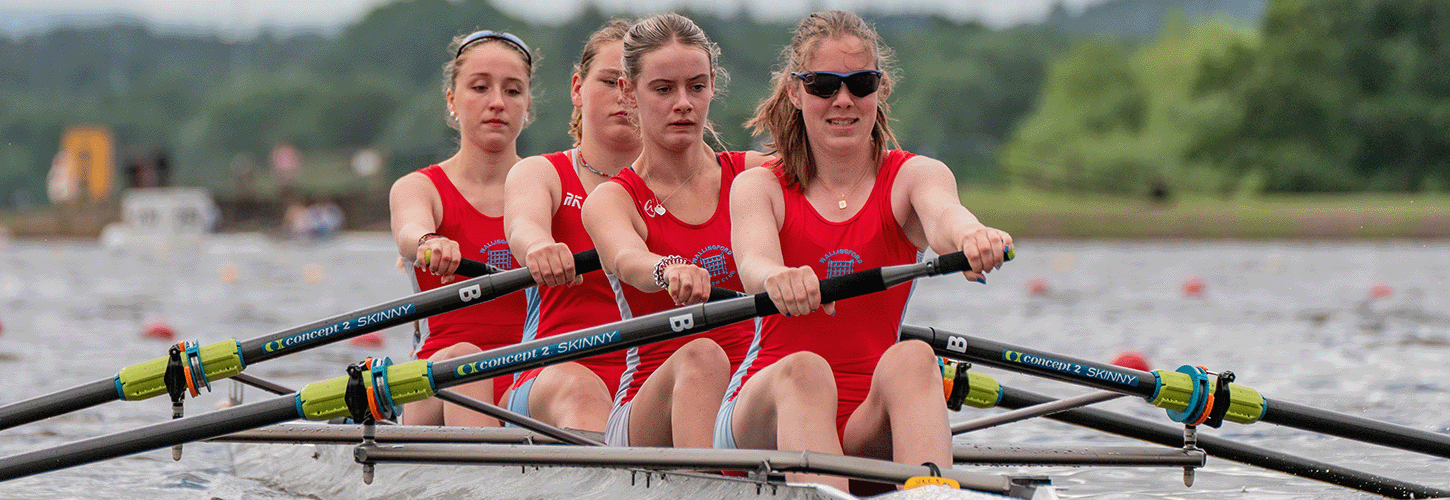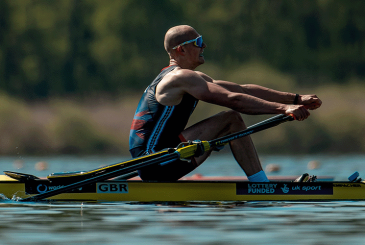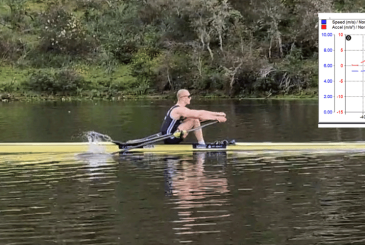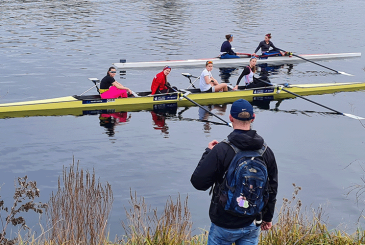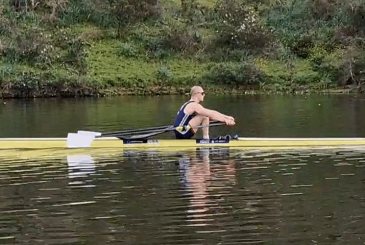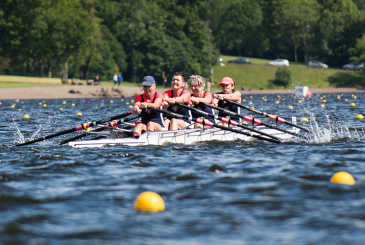Making the switch from two blades to one can seem complex at first blush but with a few simple tricks and techniques, scullers will find it’s really quite straightforward. Rosie Oates from Junior Rowing News finds out more.
The fundamentals
There’s and old adage that good scullers make for good sweep rowers. And there’s a lot of truth in that. If you can scull, you’ll know the rudiments of rowing, which will support your journey in sweep. The basics remain the same – hands-body-slide on the recovery, the reverse in the drive phase and the importance of synchronising with the rest of your crew. Greg Flower, Director of Rowing at Wycliffe College, has a long history of supporting his charges in switching over from sculling to sweep. “There are many similarities in both disciplines,” he explains. “Rhythm, control, and process are near enough identical. The biggest challenge is learning to do different things with each hand.”
With expert input from Greg, here are some important considerations that you should think about when swapping two blades for one.
The hands
Where before both hands controlled blade heights, squared, feathered, took the catch and extracted the blade at the finish, now each hand has a (fairly) separate role.
Your outside hand and arm now determines the height of the blade during the recovery (and, to an extent, the drive phase) and does the bulk of the work during the drive. Meanwhile your inside hand controls feathering and squaring; think about keeping this your inside arm and hand relaxed and do not lock the elbow like you would with your outside arm, or bend it at the catch.
Greg explains that inside hand-only and outside hand-only rowing are helpful exercises to help with the transition. “This ensures that the athlete is clear about the role each hand/arm plays in the stroke process,” he says. “Unlike in sculling where the aim is to get both hands/arms mirroring each other, sweep oar demands each hand act individually with very different roles.”
Alongside the jobs both hands perform, you should also be thinking about where on the blade your hands are meant to go. “The most important thing is to be comfortable as everyone is anatomically different,” Greg says. “Generally, you should aim for your hands to be around ¾ of your shoulder’s width apart. The inside hand should have a relaxed grip with knuckles over the handle and the thumb tucked under. The outside hand should be considered a hook with a strong elbow and pivot from the wrist with the thumb still tucked under.”
Tip: If it helps to think about just one hand at a time, focus on your outside hand at the catch, through the stroke and as you extract the blade at the finish, then (while continuing to feel the weight in your outside hand), switch your attention to your inside hand for feathering and squaring again.
Blisters!
Sadly, even if you’ve got some nicely developed callouses on your hands from doing lots of sculling, it’s likely you’ll develop new blisters when you start sweeping. This is because the different roles of your hands mean that different bits of skin are in contact with the handle.
Minimise this by keeping your hands relaxed to avoid gripping. You can find out more about blister avoidance and treatment here.
The outside wrist
Keeping your outside wrist flat is of such importance that it warrants a standalone section in this article, although it closely links to hand position. When moving over from sculling, there may well be an urge to feather with both hands. Resist this! Only the inner hand should play this role. “It’s crucial to work on keeping that outside wrist flat to avoid injury,” Greg adds. “It helps to keep your posture strong, giving a straight line of power during the drive phase.”
The body
In sculling, the body remains relatively straight and forward-facing throughout the stroke. When sweeping, you will twist your body round towards the handle at the catch, and then open it out the other way at the finish. Ideally, your shoulders will match the movement of the handle.
When sweeping, you will rotate your upper body, following the movement of the handle. It is important that this movement is carried our correctly to keep your body in a strong position, so power can be applied effectively through the foot stretcher. It is easy to end up in a weak or ineffective position. You can find out more about cues to help you do this here (see the section on ‘The rectangle’).
“Pause rowing can be used to help the athlete understand the stroke process,” Greg explains. “It is especially important in the faster-moving boats to really understand each stage of the stroke and execute it correctly.”
Tip: Make sure you keep both shoulders relaxed, especially when you’re rotating into the catch and at the finish.
Balance
It’s relatively easy to balance a single or crew sculling boat: you just need to keep your hands at the same height at all times and keep your body swinging along the centre line of the boat. Although it’s not ideal, a quad or an oct will still be balanced even if some people drop their hands into the catch, or others don’t circle much at the finish.
In sweep rowing, both sides of the boat must to work together for the boat to be level. This means that timing of the catch, finish, and recovery sequence take on extra importance. In addition, control of the handle and the individual rowers bodyweight matters, as it has the potential to impact on the rest of the crew and the overall run of the boat. Being aware of the movement of others in the crew and working with them is important.
Again pause rowing is really helpful here as you can check where your hands are at different points in the stroke cycle. Another good exercise is touching your head with your inside hand on the way forward: this allows you to be more aware of ‘feeling the weight’ in your outside hand.
Conclusion
Above all else, enjoy the challenge of taking on another discipline and the chance to row and compete in fast boats like eights. For J16s and above, there’s also the challenge of rowing in pairs and foot-steering.
And don’t forget, that if you have already mastered two blades, you’ll soon ‘get to grips’ with sweep rowing, and the potential frustrations of balance, blisters and trying to make your hands do different things will soon be in the past.
Coxes – learn the commands, manoeuvers and exercises you need to add to your skill set whenmoving from coxing quads and octuples to fours and eights.
Photo: AllMarkOne


